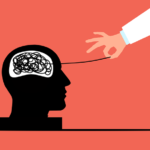Introverted Thinking (Ti) and Extraverted Thinking (Te) are both thinking functions focused on logic and problem-solving, but they differ in their approach, process, and application.
Here’s a breakdown of how:
1. Direction of Focus
- Ti (Introverted Thinking):
- Focuses inward, analyzing information based on internal logic and consistency.
- It seeks to understand the why behind systems and ideas, creating a personalized framework of understanding.
- Te (Extraverted Thinking):
- Focuses outward, organizing and structuring the external world to achieve efficient results.
- It prioritizes effectiveness, measurable outcomes, and practical implementation.
2. Approach to Logic and Problem-Solving
- Ti:
- Relies on subjective logic, breaking down concepts to understand their internal workings.
- Prefers to refine ideas until they are precise and coherent.
- Example: “Does this idea make logical sense to me based on my internal framework?”
- Te:
- Relies on objective logic, organizing information to solve problems efficiently.
- Focuses on getting things done and achieving goals.
- Example: “What’s the fastest, most effective way to achieve this result?”
3. Relationship to Systems and Structure
- Ti:
- Focuses on understanding how systems work and why they function the way they do.
- Prefers flexible, adaptable systems that align with personal logic.
- Te:
- Focuses on building or using systems to create structure and order in the external world.
- Prefers clear rules, procedures, and standards to ensure efficiency.
4. Style of Communication and Decision-Making
- Ti:
- Analytical, precise, and focused on clarity.
- Decisions are made after careful internal analysis to ensure consistency with their logical framework.
- Example: “I want to make sure I understand every detail before acting.”
- Te:
- Direct, pragmatic, and goal-oriented.
- Decisions are made quickly based on what will work best in the external world.
- Example: “Let’s organize these tasks and move forward efficiently.”
5. Practical Example: Solving a Problem
- Ti:
- Focuses on breaking the problem apart to understand it thoroughly.
- Example: “What are the underlying principles causing this issue? How can I refine the solution to make it logically sound?”
- Te:
- Focuses on organizing resources and implementing a practical solution.
- Example: “What steps can we take to fix this problem as quickly and effectively as possible?”
6. Strengths and Weaknesses
- Ti Strengths:
- Excellent at problem analysis and creating elegant, logical frameworks.
- Innovative and adaptable in solving complex or abstract problems.
- Ti Weaknesses:
- Can get stuck overanalyzing and refining ideas instead of acting.
- May struggle to consider external practicality or efficiency.
- Te Strengths:
- Highly effective at organizing resources and achieving tangible results.
- Great at taking charge and implementing solutions in the real world.
- Te Weaknesses:
- May prioritize efficiency over deeper understanding.
- Can come across as overly controlling or dismissive of alternate perspectives.
Which personality types fit these functions?
- Ti Dominant: INTP, ISTP
- Ti Auxiliary: ENTP, ESTP
- Te Dominant: ENTJ, ESTJ
- Te Auxiliary: INTJ, ISTJ
Summary:
- Ti (Introverted Thinking): Focused on internal logic, precision, and understanding the why.
- Te (Extraverted Thinking): Focused on external organization, efficiency, and achieving results.












